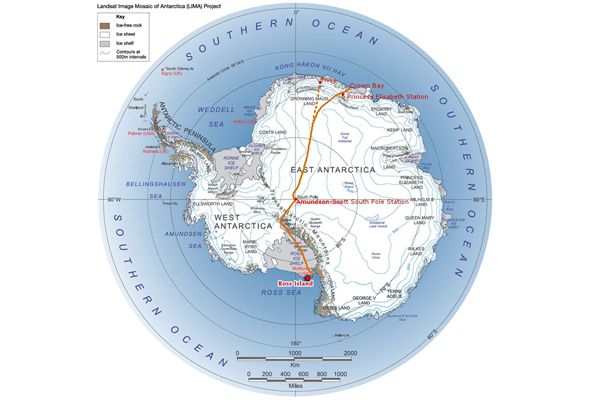
Expedition Abandons Antarctic Winter Crossing Attempt

An expedition aimed at making the first crossing of the Antarctica continent on skis during the pitch-black winter has been called off due to a compounding of technical difficulties and the team's arrival at apparently highly dangerous terrain, according to a release from the expedition, called The Coldest Journey.
The expedition -- already without their leader, adventurer Sir Ranulph Fiennes, who was forced to leave Antarctica after he developed frostbite – has come across a crevasse field that is much larger than any they have encountered so far, and appears to extend for about 60 miles (100 kilometers) in front of them, according to the statement. The crevasses "could easily swallow our vehicles and are deceptively hard to spot in the darkness and snow cover," said expedition leader Brian Newham from Antarctica. The team's resources are already depleted more than was expected by this point, because of the difficulties of the journey and dipping temperatures taking a toll on equipment.
"In my judgment there is no real choice, I believe it would be reckless and irresponsible to press on and risk the obvious dangers while incurring excessive fuel consumption," Newham said in the statement. Instead, the team will be focusing on the science they intend to do while on the southernmost continent, including a study of the effects of isolation and the physiological impacts of the harsh environment on the team.
Follow Andrea Thompson @AndreaTOAP, Pinterest and Google+. Follow OurAmazingPlanet @OAPlanet, Facebook and Google+.
Sign up for the Live Science daily newsletter now
Get the world’s most fascinating discoveries delivered straight to your inbox.

Andrea Thompson is an associate editor at Scientific American, where she covers sustainability, energy and the environment. Prior to that, she was a senior writer covering climate science at Climate Central and a reporter and editor at Live Science, where she primarily covered Earth science and the environment. She holds a graduate degree in science health and environmental reporting from New York University, as well as a bachelor of science and and masters of science in atmospheric chemistry from the Georgia Institute of Technology.











